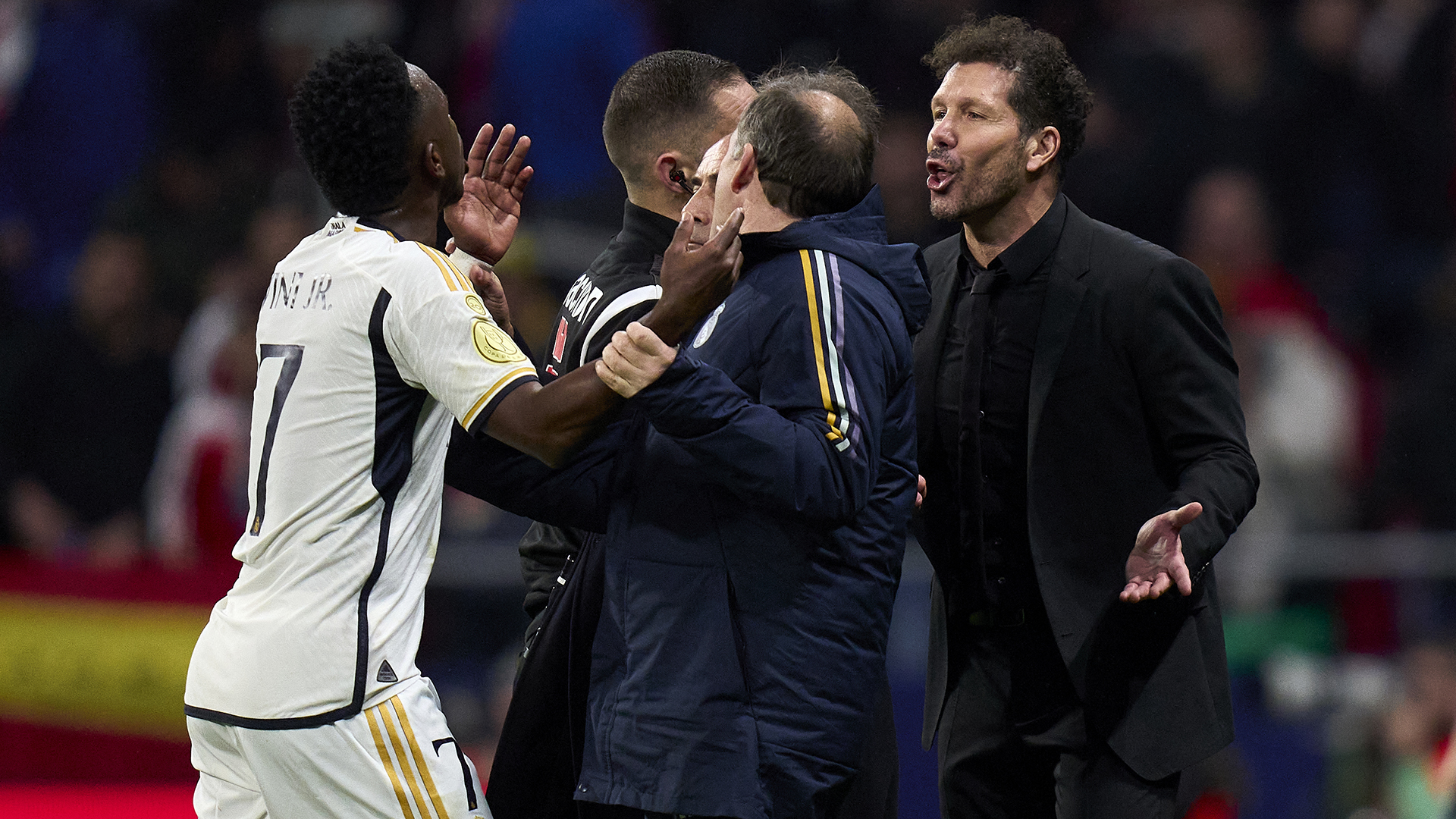As you've no doubt heard approximately four million times over the past few days, football, as the Brits call it, has at long last come home. But what does this actually mean? At the most surface level, "It's coming home" and the song it originates from—the iconic and ironic "Three Lions," written and performed by comedians David Baddiel and Frank Skinner, backed by the band the Lightning Seeds—refers to the prospect of England finally winning another major tournament in the sport it invented. But if, before Sunday's Euro 2022 triumph, soccer hadn't come "home" since the men's team's World Cup win in 1966, then where had it been that whole time?
Well, in a word: everywhere. Thanks to the literally globe-spanning grip of the British empire in the middle of the 19th century, the English exported their new sport to almost every corner of the planet not long after its rules had begun to be codified. Once introduced to the game, many of the countries and continents that started playing soccer became obsessed. The subsequent history of the sport is a story of cultural growth and interactivity, as each location developed their own unique styles and ideas that then collided and combined with the styles and ideas of their neighbors and opponents, creating one massive, worldwide, never-ending churn of soccer development.
The club game is where the bulk of this experimentation and progress first occurs, but it's at the international level where the largest and most meaningful demonstrations happen. You could say, then, that at any given moment soccer resides in whichever country features the best, most exciting, most inventive, most influential, most successful style of play, as determined by performances in the game's biggest international tournaments. Hence why soccer can be said to have been born in England, but has only returned to its place of origin once in 1966 and once again right now. In the interim, the nomadic sport has bounced around to places like Brazil, France, Argentina, Germany, Spain, Uruguay, Italy, and the like, following the goals and the glory wherever they lead.
Now, for almost the entirety of the sport's history, referring to soccer has meant referring exclusively to men's soccer. This was by design. Though women's soccer enjoyed a golden age of popularity around the turn of the 20th Century, and especially in England during WWI, it didn't take long for the game's national and international governing bodies to put a clamp on the budding women's game. Bans on women's soccer like the one England's Football Association had in effect from 1921 to 1970 were common, as was the broader idea that the sport was not for women. Though FIFA organized the first men's World Cup in 1930, it wasn't until 1991, after several independent efforts to put on a women's version, that FIFA finally held a World Cup for women's teams. The Women's European Championship is actually one of the the oldest international tournaments in the women's game, dating back to 1984. Coincidentally, Sweden won that inaugural European Championship, beating England on penalties in the final.
The prehistory of officially recognized women's international soccer is fascinating and full of overlooked figures and entities (Nettie Honeyball and her British Ladies' Football Club, Ellen Wille, the Dallas Sting), but it's not until 1991 when women's soccer really starts to take off with the first World Cup. And if women's soccer could be said to have lived somewhere since then, it has been as an almost permanent resident of the United States. The USWNT has won four of FIFA's eight Women's World Cups, and has never finished lower than third. At the seven Olympic Games that have featured women's soccer, the Americans have racked up four gold medals, one silver, and one bronze. Powered in large part by the substantial investment into the college game due to Title IX, the American girls' and women's soccer development system has been the gold standard around the world for decades. There has never been a similar period of comprehensive dominance in international soccer like the U.S. women's run from 1991 to today.
At next summer's World Cup, the USWNT will once again be the big favorites to win it all. Victory at the Euros—a tournament of women's soccer's deepest continental confederation, but one that lacks many of the game's strongest teams like the U.S., Canada, Australia, Brazil, and Japan, and is thus still relatively shallow—is great and all, but can England's win in that competition really be enough to say women's soccer no longer calls the U.S. home? I'd argue that the answer is closer to yes than it may at first seem.
You can find evidence for this if you take your eyes off the pitch itself and instead look around at all the eyes surrounding the pitch. The official attendance number for Sunday's England–Germany final was 87,192, which makes it the biggest ever crowd for a European Championship match—men's or women's. It also makes it the fourth-biggest attendance number in women's soccer history. The two all-time highest women's soccer attendance records were also set this year, first when Barcelona welcomed a record-breaking 91,553 spectators in the Camp Nou to watch a Champions League match against Real Madrid in March, the second time when Barça broke its own record just a few weeks later while hosting Wolfsburg in the same competition. Europe is clearly experiencing an explosion of interest in women's soccer right now, and the particular manifestation of it could spell the beginning of the end of America's women's soccer hegemony.
It's instructive to look at which teams and tournaments have benefitted from these enormous attendances. Take Sunday's match. On paper, the Women's Euros are a tertiary competition on the international scene, ranking far below the Women's World Cup and the Olympics. And yet the tournament received a huge amount of attention in spite of that. One big reason for this, I believe, is these Euros' association with the men's Euros. In men's international soccer, the Euros are a step below the World Cup, but remain the second-most prestigious international tournament. The fact that the women's Euros can share a name, venues, constituent teams, and the rest with the much more popular men's version gives the competition a huge, readymade base from which to launch itself into the soccer world's imagination.
The same is true at the club level, too. It matters that Spain's biggest women's team is called Barcelona just like the men's team, wears the same jerseys as the men's team, can hold games in the Camp Nou just like the men's team, and competes in the internationally renowned Champions League just like the men's team. And it especially matters that this particular team is called Barcelona. As an institution, Barcelona has become what it is today in part because of its success on the field, but also because of its success at crafting and selling its own narrative: that of Catalan resistance to Francoist oppression, Johan Cruyff the player, the Dutch style, Johan Cruyff the manager, La Masia, South American geniuses, Pep Guardiola, tiki taka, juego de posición, Xavi, Iniesta, Messi, trebles, Més que un club, the beautiful game, and all the rest. Guardiola's Barça may have earned the right to be called the greatest club team of all time by what it did on the pitch, but it's the story the club told along the way that earned the team its permanent spot in the sport's collective consciousness. And I don't think some 180,000 people would've piled into the Camp Nou to watch the Barça women play in those two Champions League matches if those women didn't play such an intricate, expressive brand of soccer that instantly recalled and reanimated that famous narrative. In many ways, the women's team today is more redolently Barcelona than the current men's one.
Reasons like this are why Europe has long been something of a sleeping giant in women's soccer. The continent is already crazy about the sport, and already has developed the means and methods to cultivate elite talent and assemble the talent into powerful, popular teams. All it really takes is opening the doors that had previously been closed to girls and women, and then treating the female version of the game with the respect and seriousness it deserves; do that, and the game in Europe should flourish almost immediately. You don't even have much work to do to convince people why they should care about the sport, the teams, and the competitions that they already love. All of it already exists, and is just waiting to be unleashed for women the way it is for men.
By comparison, America will have a hard time competing with a fully realized European women's soccer setup. The U.S. enjoys none of those prefabricated advantages. The USWNT can continue to compete for titles in the World Cup and Olympics, but it's difficult to imagine the CONCACAF confederation tournament, which doesn't even really matter in the men's game, ever rivaling the preexisting history and import of the Euros. (Indeed, the CONCACAF W Championship was also held this summer, to very little fanfare.) The additional interest and money, the stiffer competition, and the innovation engendered by a newly prominent Women's Euros tournament could further extend UEFA's place as the hotbed of women's soccer, allowing Europe's top teams to further cut into an already shrinking American lead on the pitch.
Thanks mainly to the USWNT, though increasingly aided by the USMNT, Americans already know how and why to care about soccer during the big international tournaments. But even after a couple decades of MLS and the various women's professional leagues that have fallen and risen over the years, the sport is still struggling to establish itself as much more than a niche interest at the club level. The NWSL has been around for 10 years now. The league has had to face the same obstacles that all upstart sports leagues have to deal with: securing financial and cultural investment, establishing name and brand recognition, attracting top players, etc. The European domestic leagues have something of a leg up in that it's much easier to sell tickets to Barcelona vs. Real Madrid at the Camp Nou than it is to Spirit vs. Pride at Exploria Stadium. Europe already had the globally recognized kits and colors, now it's finally throwing some money behind them.
(In addition to having a small fanbase and less name recognition, Sportico reported on Monday that the NWSL could possibly be on the brink of financial crisis after cryptocurrency platform Voyager Digital, one of the league's biggest sponsors, declared bankruptcy. And don't forget the USWNT's new collective bargaining agreement, which stipulates that U.S. Soccer will no longer subsidize the club salaries of national-teamers who play in the NWSL. A crushing financial blow and an exodus of stars to Europe could combine to form an existential risk for the league.)
Men's and women's soccer are different and separate but also the same and connected. Rather than rivals for attention and resources, they should be two games that exist in a synergistic relationship, each one strengthening the other and improving the whole. There are few opportunities and even fewer efforts to create any synergy between the men's and women's games in America. Meanwhile, it appears that Europe is on the cusp of linking its gigantic men's game with its women's game, which portends a mighty transformation of the latter.
This should be great for women's soccer and soccer generally, and by no means implies any kind of imminent, inevitable crash from the USWNT. Maybe an empowered European women's soccer system means the best American girls start making their way to Europe at young ages the way American boys do now, where their skills will be honed in the most competitive possible environment, making the USWNT even stronger. Maybe the future of the USWNT is to be the best of a much tighter cadre of peers rather than standing head and shoulders above the rest. Maybe American soccer sees what's happening in Europe and takes it as a challenge, increasing investment in the NWSL to ensure that it can attract the world's best players, and American domestic soccer comes away strengthened.
But maybe the NWSL fails, the best Americans leave for Europe, the European teams meet and then surpass their American domestic and international counterparts, and America spends the coming decades in a state of mediocrity, pining for some obscure possible future where women's soccer finally comes home again. The only thing clear is that the conditions for major change are present, and for the sake of what so many American women have worked so hard to build over the years, it would behoove American soccer to think seriously about how it intends to maintain its place in the new world that appears on the horizon.
Besides the obvious joy in bringing long-awaited success to their country, the main sentiment you get from everyone in and around the England national team after their victory at the Euros is that the win is only the beginning of something much bigger. As captain Leah Williamson said in a pitch-side interview right after the game, "The legacy of this tournament is the change in society." It's a grandiose claim, and it'll take a lot of work to make it happen, to continue growing women's soccer and, by doing so, extending and equalizing the possibilities for girls and women in society. But the players won't be alone in the attempt. For help with the cause, they'll have a large and growing audience of passionate fans, the tandem support of much of the existing English and European soccer infrastructure, and quite possibly a new resident. Don't be surprised if the sport of women's soccer finds itself enchanted enough by what it sees back home in England and Europe and decide to stick around for awhile.






